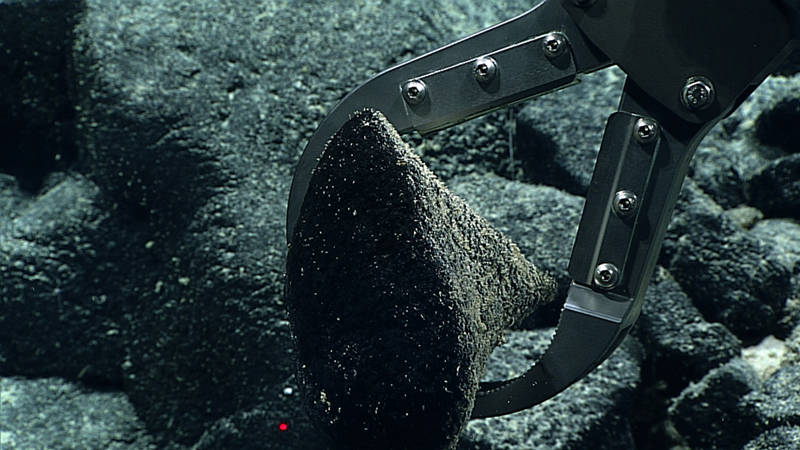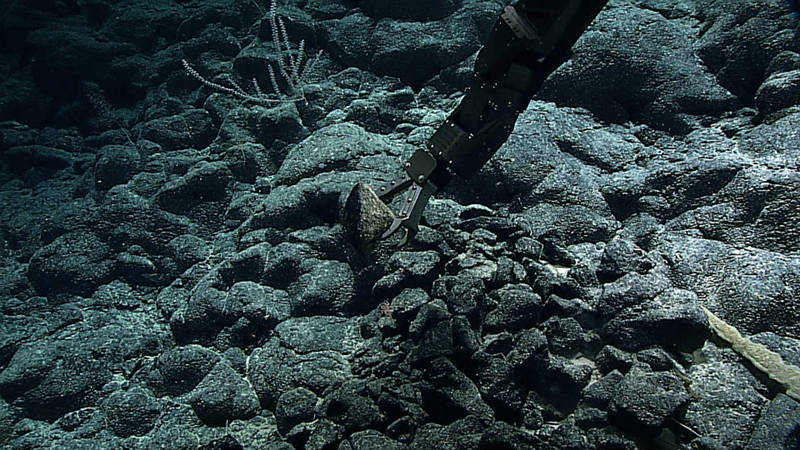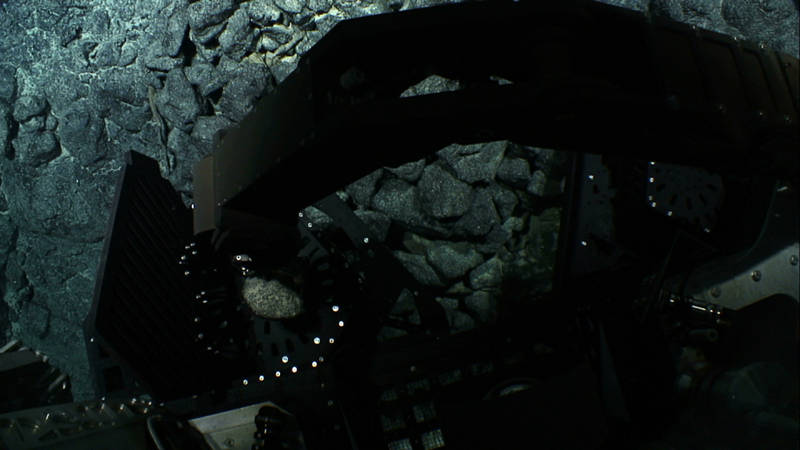
By Dr. Michael Garcia - Professor, University of Hawaii
August 6, 2015

A close-up of the Deep Discoverer's stainless steel custom sampling claw, holding a rock sample. Image courtesy of the NOAA Office of Ocean Exploration and Research, 2015 Hohonu Moana. Download larger version (jpg, 1.2 MB).
The Hohonu Moana expedition presents an unprecedented opportunity to observe and sample the volcanoes from the Northwest Hawaiian Ridge within the Papahānaumokuākea National Marine Monument.
During this expedition, we will examine at least 14 volcanoes to evaluate their growth and erosion to better understand how they form and erode. During the dive program, a wide diversity of terranes will be visited including rift zones, craters and carbonate terraces, and seamounts that vary greatly in age (80 to 20 million years) but formed next to each other.

ROV Deep Discoverer reaches for a rock sample. Image courtesy of the NOAA Office of Ocean Exploration and Research, 2015 Hohonu Moana. Download larger version (jpg, 1.8 MB).
This is the first time that rocks have been collected during an Okeanos Explorer expedition.

D2 stores its rock sample in one of the ROV’s many sampling containers. These containers safely hold samples during the transit of up to 6000 meters to the surface! Image courtesy of the NOAA Office of Ocean Exploration and Research, 2015 Hohonu Moana. Download larger version (jpg, 933 KB).
Rocks provide essential clues about the origin of the Hawaiian volcanoes. For example, scientists will use them to determine when the volcanoes formed. The hotspot model predicts that the volcanoes should increase in age from the southeast (where new lava is being erupted on the Island of Hawaii) towards the northwest. Most of the volcanoes in the Monument have not been dated, so the hotspot model has not been fully tested. We know that the rate of plate motion has changed but are not sure when, and only by dating more rocks can we figure this out.
The minerals in the rocks can be used to infer the history of the magma including its temperature and possible depth at which it was cooling before eruption. The rocks will also be examined for their radiogenic isotopes (Pb, Sr, Nd, Hf) to determine the variations in the deep mantle source for the Hawaiian chain.
The Deep Discoverer (D2) remotely operated vehicle will be able to collect two rock samples per dive. These samples will give scientists valuable geological information that could not be garnered by video alone.